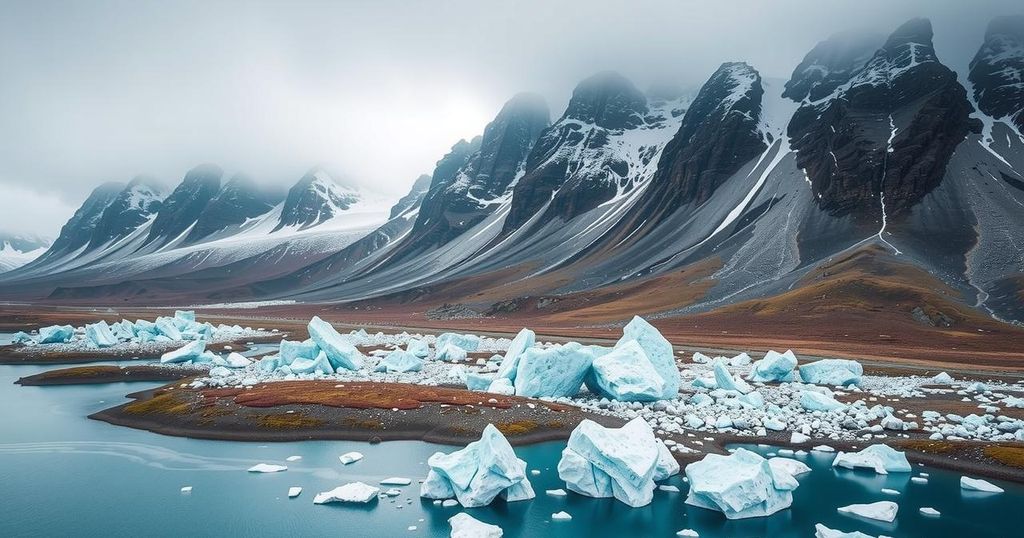Greenland plays a crucial role in climate change, influencing global weather patterns and sea levels due to significant ice melt. Its value is heightened by vast untapped natural resources and strategic geopolitical importance, making it a focal point in international discussions on climate and resource management.
Greenland, the world’s largest island, stands as a critical player in the dynamics of global weather patterns and climate change. Its remote location and vast ice reserves are not only significant for the local environment but also hold geopolitical and economic implications. As climate change accelerates, Greenland’s ice is melting at an alarming rate, impacting sea levels and inviting international interest in its untapped resources, including rare earth minerals and fossil fuels. President Donald Trump’s interest in acquiring this semiautonomous Danish territory reflects its increasing prominence in global affairs, further fueled by the changing climate which has made previously inaccessible resources more attainable.
According to climate scientist David Holland, Greenland can be likened to a thermostat for the planet, warming four times more rapidly than elsewhere. The melting ice poses substantial risks, including rising sea levels that could inundate coastal cities worldwide. A study highlighted that Greenland has lost approximately 182 billion tons of ice annually since 1992, with a troubling spike to 489 billion tons lost in 2019 alone. This significant reduction in ice not only threatens coastal ecosystems but also contributes to changes in weather patterns across the globe.
In addition, Greenland’s unique role in regulating ocean currents, such as the Atlantic Meridional Overturning Circulation (AMOC), underscores its importance in maintaining global climate stability. There is concern among scientists that a slowdown or collapse of this crucial current could alter weather conditions significantly, potentially leading to severe climatic consequences in Europe and North America. Moreover, the changing color of Greenland’s landscape, as white ice converts to the blue of seawater, signifies an alarming shift in energy absorption, further exacerbating global warming.
Geopolitically, Greenland’s strategic location between the U.S., Russia, and Europe has made it a coveted territory for over a century. The increasing accessibility of the Arctic region for shipping routes is likely to enhance its value even more. Beyond its geopolitical significance, its breathtaking beauty and unique wildlife are captivating to researchers like David Holland, who emphasizes the awe-inspiring nature of the island’s ice formations and wildlife.
In conclusion, Greenland emerges as a focal point of global attention due to its critical contributions to climate change dynamics, weather patterns, and geopolitical strategies. Its melting ice presents a dual challenge and opportunity, with potential environmental disasters and invaluable natural resources at stake. As the world becomes increasingly aware of Greenland’s significance, both its pristine landscapes and resource potential will likely continue to evoke global interest.
The article delves into Greenland’s dual role as a pivotal player in climate change and as a strategic geopolitical location. With the impacts of climate warming, Greenland is experiencing rapid ice melt, leading to critical environmental shifts and global sea-level rise. As countries scout for resources and strategic advantages, Greenland’s untapped minerals and energy reserves have garnered interest. The article highlights the balance between leveraging these resources and the implications for climate dynamics.
Greenland’s accelerated climate changes and melting ice sheet have positioned it as a focal point of both environmental concern and geopolitical interest. Its melting ice poses severe risks, including rising sea levels that threaten global populations. Concurrently, the island’s strategic resources draw international attention, making it a critical player on the world stage. Addressing the challenges presented by climate change while understanding the opportunities for resource extraction will be essential as the 21st century unfolds.
Original Source: www.washingtonpost.com






